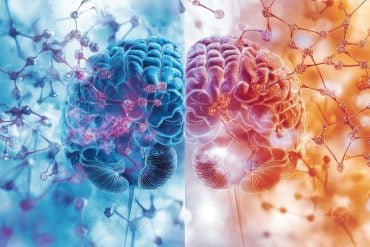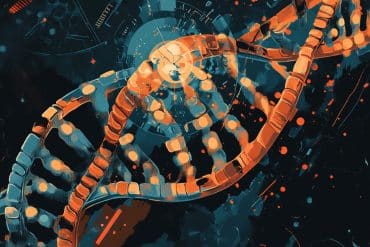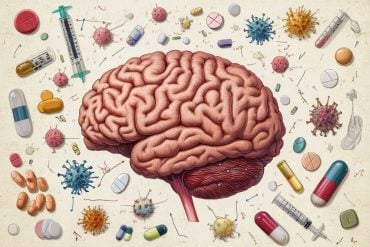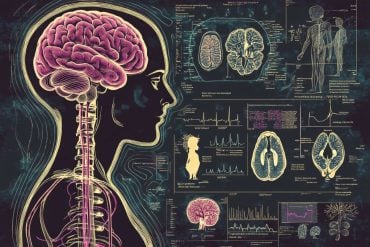Summary: Machine learning may allow clinicians better ability to predict which of their patients will attempt suicide, a new study reports.
Source: Florida State University.
A groundbreaking project led by a Florida State University researcher makes an exponential advance in suicide prediction, potentially giving clinicians the ability to predict who will attempt suicide up to two years in advance with 80 percent accuracy.
FSU Psychology researcher Jessica Ribeiro feels an urgency to confront this relentless problem. Shadowing her research is the ever-present awareness that 120 Americans take their lives every day, nearly 45,000 a year.
Ribeiro’s paper, titled “Predicting Risk of Suicide Attempts over Time through Machine Learning,” will be published by the journal Clinical Psychological Science.
The study offers a fascinating finding: machine learning — a future frontier for artificial intelligence — can predict with 80-90 percent accuracy whether someone will attempt suicide as far off as two years into the future. The algorithms become even more accurate as a person’s suicide attempt gets closer. For example, the accuracy climbs to 92 percent one week before a suicide attempt when artificial intelligence focuses on general hospital patients.
“This study provides evidence that we can predict suicide attempts accurately,” Ribeiro said. “We can predict them accurately over time, but we’re best at predicting them closer to the event. We also know, based on this study, that risk factors — how they work and how important they are — also change over time.”
Ribeiro’s research represents an extraordinary development in suicide prediction that is desperately needed. A recent study by FSU Psychology Assistant Professor Joseph Franklin revealed that 50 years of suicide prediction research had not produced any real progress in being able to predict who will try to kill themselves. The traditional risk factors identified over the past half century to predict suicidal behavior — such as depression, stress or substance abuse — could muster an accuracy rate not much better than random guessing.
A coin flip is as accurate on suicide attempts as the brightest suicide experts in the world.
“It was really sad,” said Ribeiro, who worked with Franklin on that study. “Fifty years of research with really smart people working on this and no real change. We can see that in the suicide rates. I’m not saying machine learning is the panacea, but these kinds of techniques and changes in the status quo can really disrupt a stagnant research area.”
Ribeiro’s project was born out of Franklin’s startling findings. She and Franklin, along with Colin Walsh of Vanderbilt University Medical Center, successfully accessed a massive data repository containing the electronic health records of about 2 million patients in Tennessee. The project was the largest research study of its kind in history, a “huge opportunity,” Ribeiro said. The team combed through the electronic health records, which were anonymous, and identified more than 3,200 people who had attempted suicide.
Having that information was crucial; it contained detailed medical histories of thousands of people leading up to their suicide attempts. Using machine learning to examine all of those details, the algorithms were able to “learn” which combination of factors in the records could most accurately predict future suicide attempts.
“The machine learns the optimal combination of risk factors,” Ribeiro said. “What really matters is how this algorithm and these variables interact with one another as a whole. This kind of work lets us apply algorithms that can consider hundreds of data points in someone’s medical record and potentially reduce them to clinically meaningful information.”
That kind of meaningful information could be used to develop an alert system for clinicians identifying patients at risk of suicidal behavior. For example, the system would issue a “red light warning” or “risk score” for every person so when they come into a hospital with acute symptoms, an emergency room doctor could see an elevated risk for suicide and get a psychiatrist to respond immediately.
“Just like you get a cardiovascular risk score, you would get a suicide risk score that is informative for clinicians and helps direct them on what steps to take next,” Ribeiro said.
Too often, those next steps never happen. Studies show about 60-90 percent of people who die by suicide had visited their medical provider within the past year and the clinician never saw it coming.
“This algorithm funnels our attention to the folks who are most likely to attempt suicide so our resources are better devoted to people we’re missing now,” Ribeiro said. “Right now, we’re missing a large proportion of people who are at risk that we never even think about.”
Health care systems are building national and international infrastructures of electronic records that could be analyzed with machine learning to identify people at risk of suicide. But the data might have to be modified for research purposes, so that’s one challenge still ahead.

More organizations like the U.S. military and U.S. Department of Veterans Affairs are already in a position to move ahead with machine-learning methods for their own electronic health records. Ribeiro is currently working on a study with the Military Suicide Research Consortium based at Florida State that uses machine learning to identify people with an imminent risk of suicide.
Suicide rates have not changed much over the past century and have steadily risen since 1999, but Ribeiro remains hopeful about her team’s work and believes it will meet ambitious goals. She envisions breakthroughs on being able to identify and treat large-scale populations of those who need help the most.
“The whole focus of my research program is to be able to accurately detect suicide risk for all people at all points in time,” Ribeiro said. “That’s what I’m going to work toward. What we have so far is promising, but it’s just a start. While these are not the only methods or the best ones, I think if more researchers focus on this approach we can finally see meaningful declines in the rates of suicidal behaviors, and ultimately suicide deaths, on a global scale. It’s not that far off.”
Ribeiro collaborated on the “Predicting Risk of Suicide Attempts over Time through Machine Learning” project with Joseph Franklin, assistant professor of psychology at Florida State University; and Colin Walsh, assistant professor of biomedical informatics at Vanderbilt University Medical Center.
Source: Dave Heller – Florida State University
Image Source: NeuroscienceNews.com image is in the public domain.
Original Research: The study will appear in Clinical Psychological Science.
[cbtabs][cbtab title=”MLA”]Florida State University “How Artificial Intelligence Can Save Lives: Machine Learning to Predict Suicide Risks.” NeuroscienceNews. NeuroscienceNews, 1 March 2017.
<https://neurosciencenews.com/suicide-machine-learning-ai-6176/>.[/cbtab][cbtab title=”APA”]Florida State University (2017, March 1). How Artificial Intelligence Can Save Lives: Machine Learning to Predict Suicide Risks. NeuroscienceNew. Retrieved March 1, 2017 from https://neurosciencenews.com/suicide-machine-learning-ai-6176/[/cbtab][cbtab title=”Chicago”]Florida State University “How Artificial Intelligence Can Save Lives: Machine Learning to Predict Suicide Risks.” https://neurosciencenews.com/suicide-machine-learning-ai-6176/ (accessed March 1, 2017).[/cbtab][/cbtabs]






